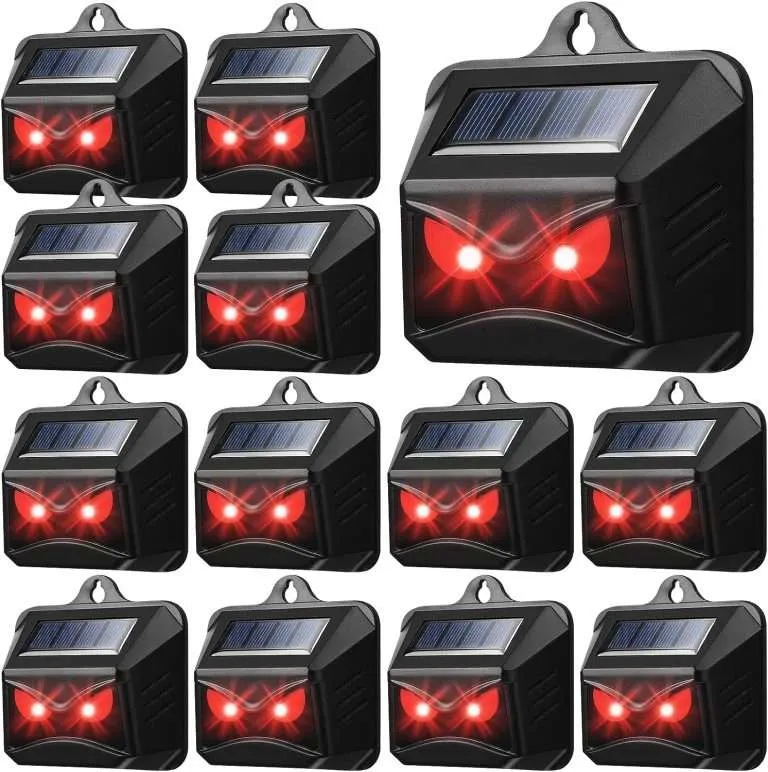While woodchucks, or groundhogs, may seem adorable from afar, they can destroy gardens and lawns due to their burrowing behavior. To ward off these creatures effectively in different conditions, repellents need to be waterproof. This guide will help you understand groundhog behavior, how to choose the right waterproof repellents, and how to implement them.
Understanding Groundhog Behavior
Groundhogs form plots unlike any other burrowing rodents, and the extent of their tunnels can damage the structural integrity of gardens and lawns. As herbivores, they feed on a wide range of plants, including crops and ornamental plants, and are most active in the hotter months as they prepare for hibernation.
Types of Waterproof Groundhog Repellents
To make sure there is no exposure to woodchucks, waterproof ultrasonic repellent stakes are ideal. These devices emit sonic vibrations that ward off not just groundhogs, but other burrowing pests too. Many modern models are solar powered and weather resistant.
The Importance of Waterproof Repellents
Compared to traditional repellents, waterproof ones are more beneficial due to their consistent performance regardless of conditions. Groundhogs are continuously blocked from replicative bodily harm due to the constant waterproof protection provided. This is because outdoor repellents are subjected to the elements as well. Whether its rain, dew, or irrigation systems, no waterproof ingredients will ever be compromised.
Example:
1. The robust construction of Jahy2Tech Solar Ultrasonic Mole Repellent with ABS plastic and IP66 waterproofing ensures it can withstand heavy rains without sustaining damage.
2. Natural Granular Repellents
These form of grounds repellents made from natural materials such as castor oil do not harm groundhogs, yet create a hostile environment for them. Being waterproof and granulated allows them to be used outdoors.
3. Liquid Sprays
Liquid sprays are applied to tertiary zones where groundhogs are often spotted. Make sure to choose waterproof options for better retention after application.

Implementing Waterproof Groundhog Repellents: A Step-by-Step Guide
- Identify Groundhog Activity
– Locate Burrows: Search for a cave of about 1-2ft in length and an entrance of about 10-12 inches in diameter which, if adjacent to a structure, has a mound of dirt next to it.
– Assess Damage: Identify areas with broken plants and structural damage for prioritized repelling exposure.
- Choose the Appropriate Repellent
– Ultrasonic Stakes: Great for a larger working zone, as they cover a great amount of area and need little maintenance.
– Granular Repellents: Ideal for specific places such as planting beds and around the entrances to the burrows.
– Liquid Sprays: Most appropriate for applying directly to structures or plants that are prone to groundhog activities.
- Accurate Placement and Application Guidelines
– Ultrasonic Stakes:
– Placement: Place the stakes in the open ground where the solar panel can receive sunlight exposure- Spacing: Follow industry standards like positioning stakes every 50-100 feet to maximize coverage.
– Granular Repellents:
– Application: Apply granules around problem areas to establish a protective perimeter.
– Reapplication: Follow directions, especially after rainfall, and reapply as necessary regardless of water resistance.
– Liquid Sprays:
– Coverage: Plants, soil, or other structures that require protection should be sprayed directly.
– Frequency: Based on guidance from the product, reapplies should be made considering weather conditions.
- Monitoring and Maintenance
– Weekly inspections: Check your property at least once a week for new burrows or fresh signs of groundhog activity.
– Maintenance: Check that ultrasonic devices are working properly and that repellent barriers are not damaged.
– Strategy Adaptation: If groundhogs are still present, consider using more than one repellent method at a time or seeking help from pest control specialists.
Additional Recommendations
– Increasing Synergy: The use of both ultrasonic devices and other natural repellents is known to further increase effectiveness.
– Landscaping Changes: Eliminate what may attract groundhogs such as readily available food and consider placing barriers that can deter digging.
– Pet Protection: Verify that all repellents used are non-toxic to pets, particularly if they have access to the treated areas.
Final Thoughts
A garden strategy must be formulated to contain groundhogs since they are prone to changing their behavior according to shifting weather patterns. Waterproof Ultrasonic Groundhog Repellents ensure their effectiveness regardless of the weather. With the right combination of repellents and knowledge of groundhog behavior, you can sustain a healthy outdoor environment. Explore more options at GroundhogRepellent.

